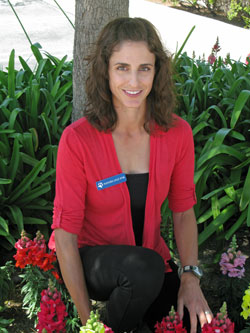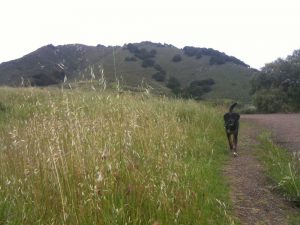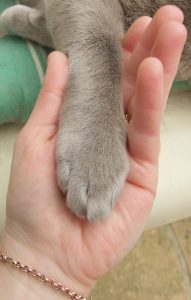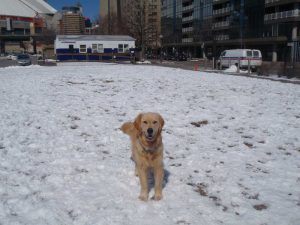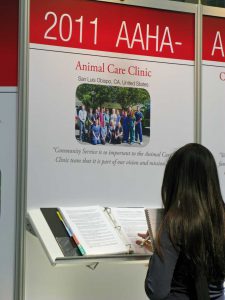 |
| Finalist display of ACC at AAHA Conference |
Many have heard by now that Animal Care Clinic was honored with an award as a Finalist for American Animal Hospital Association (AAHA) Practice of the Year! We are all very excited about our finalist status and proud to have shown ourselves well in honor of our clients and patients. For those who haven’t heard, let me tell you a little about AAHA and this award.
Last year, I was looking through an AAHA magazine and read an article about the first annual AAHA Practice of the Year award and immediately thought, why didn’t I hear about this? In my mind Animal Care Clinic should be right there at the top. So last fall, I spent many hours preparing our application. AAHA wanted to know how we communicate that we are AAHA accredited, something that only 15% of veterinary hospitals in North America can claim! They also wanted to hear about our community service, staff continual education, and compliance of clients on several different services we offer. After sending in our application we were thrilled to hear that we had made it among the top-5 finalists for the Practice of the Year award. The award was to be announced and presented at this year’s AAHA Conference in Toronto, Canada; and so of course, we must go!
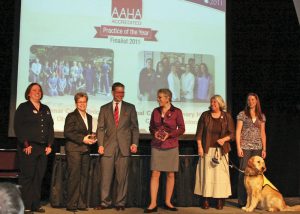 |
| Presentation of award by AAHA President to Animal Care Clinic |
 |
| Dr. Mike Cavanagh, Director and CEO of AAHA talking about Animal Care Clinic |
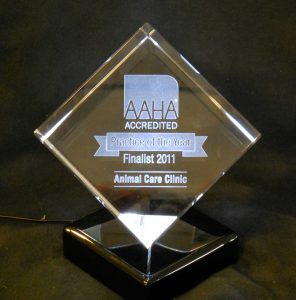 |
| Our Practice of the Year Award! |
The very last day of the conference was the awards breakfast where they announced where they ranked us as finalists. Of course, we all wanted to be first but it was such an honor to be there in the first place. We waited patiently as other practices were named as first, second and third before we were announced as finalists. During this time we got to hear about the other hospitals whose company we shared and couldn’t help but be very excited for each of them. Every other practice in the top-5 really stood out in their own way and there is no way we could fault any one of them. Our finalist position means that we are qualified to apply again next year, and so w shall! I can personally say that I learned about so many ways that we can improve for our patients, our clients, and our staff. Many of these things we have already begun to apply. Besides, we did get a really cool award that is being displayed on our front desk so please come and take a look! If you have any questions about AAHA, any of our staff members would be more than happy to tell you more and we always strive to improve for everyone’s sake!




